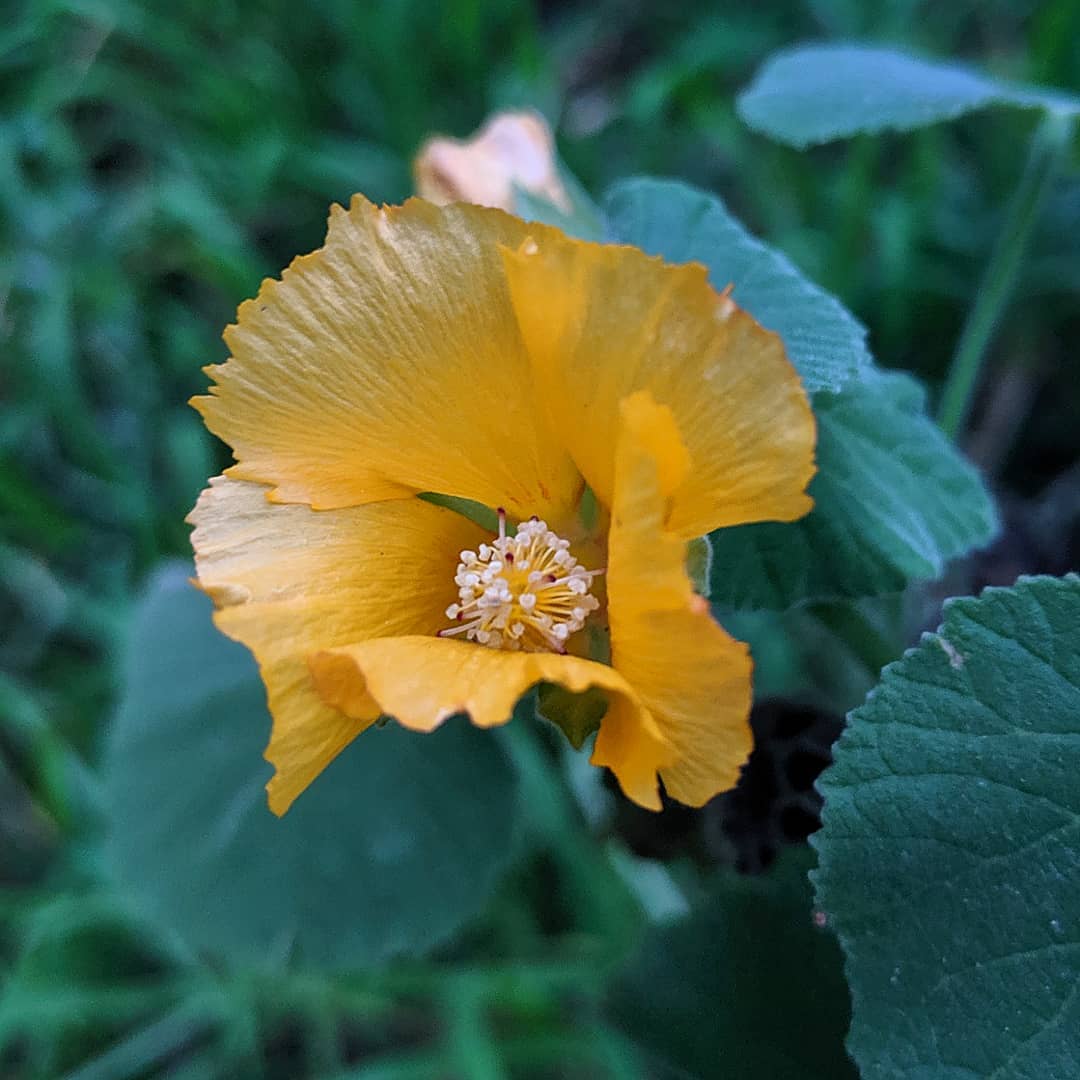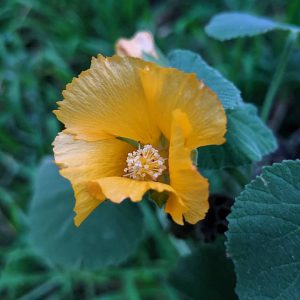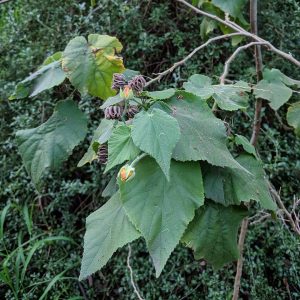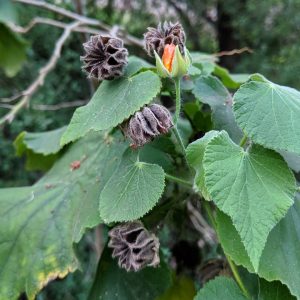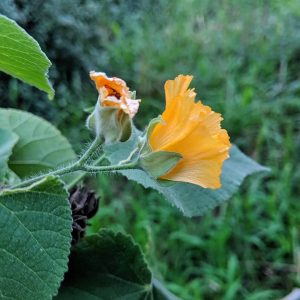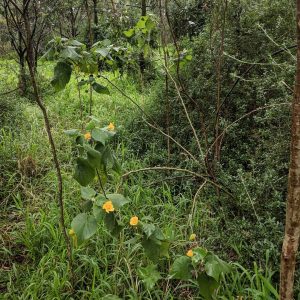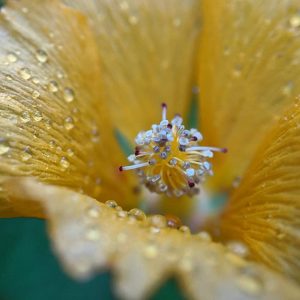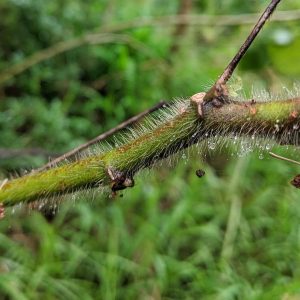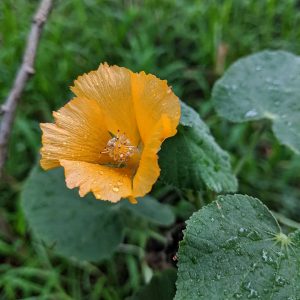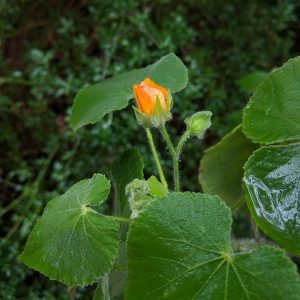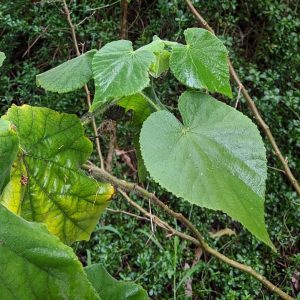Hairy Abutilon (Abutilon grandifolium), a South American plant similar in appearance to various South Asian Abutilons, hence another common name ‘Hairy Indian Mallow’.
Although there are native Australian Abutilon species, various plants were brought to colonial Australia as garden ornamentals or as potential industrial fibre crops. Other Abutilons have proven to produce seed banks that persist for a half century or longer; the seeds are dispersed by water and ants, and of course by the dumping of garden rubbish.
Hairy Abutilon has established itself on disturbed sites and catchments in southern Queensland and in NSW, where it has been confused with species variously native to the tropical coast or to the riparian sites in the arid interior. Records from these states date to the 1920s, although the digitised information on these early collection records appears insufficient to say whether they recorded cultivated or free-seeding material. However, a 1965 record from Sydney’s northern suburbs is unequivocal: ‘Well established near creek … in sandstone gully.’
The species has been identified In Melbourne several times since 2000 — at a handful of sites in South Yarra (including the Botanic Gardens, although the plant was apparently never accessioned there), and at a location near the mouth of Moonee Ponds Creek.
The photographed individual is a single plant established in riparian woodland in Yarra Bend Park in Kew.
View Original Post on Instagram
Search for information about Abutilon grandifolium in the Flora of Victoria
View information and occurrences of Abutilon grandifolium on the Atlas of Living Australia
